- Home
- international
- news
- Tightropes, barrel plunges, and a jet ski: More than 20 people braved going across or down Niagara Falls with varying degrees of success
Tightropes, barrel plunges, and a jet ski: More than 20 people braved going across or down Niagara Falls with varying degrees of success
James Pasley

- For a century and a half, Niagara Falls have compelled people to do dangerous things.
- Performers crossed the gorge on tightropes, pulling off stunts like carrying people on their shoulders.
Over the last century and a half, a select few have dared cross and later ride down Niagara Falls.
At least six have died from trying to ride the falls. But people kept going for it.
Michael Clarkson, who wrote a book about Daredevilry and the falls called "The Age Of Daredevils," told WBUR that the falls seem "to draw people. It seems to pull them."
One daredevil named William Fitzgerald told Clarkson he visited the falls when he was 5 years old, and the roar ended up haunting him for years.
"That damn water wouldn't shut up," he told Clarkson. "The raw power, that unleashed power."
Fitzgerald isn't the only person who attempted to brave the white rapids of the falls. He's among nearly two dozen others who faced it — all of whom were met with varying degrees of success.
Niagara Falls' daredevilry began with the tightrope. In 1859, Jean Francois Gravelet, otherwise known as the Great Blondin, completed a number of tightrope crossings over the Niagara Falls Gorge, including one where he carried his manager.
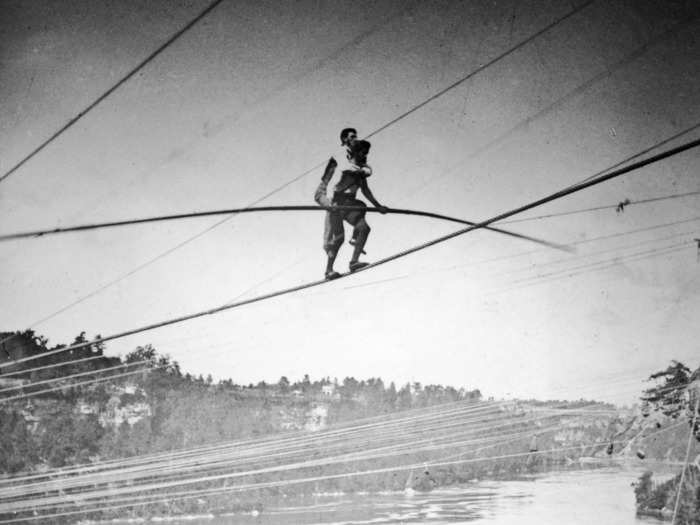
In another attempt, he wheeled across a wheelbarrow. He also made the crossing while his legs and arms were bound in chains. Blondin didn't use a net for his crossings since he figured the safety measure would only increase the chances of him falling.
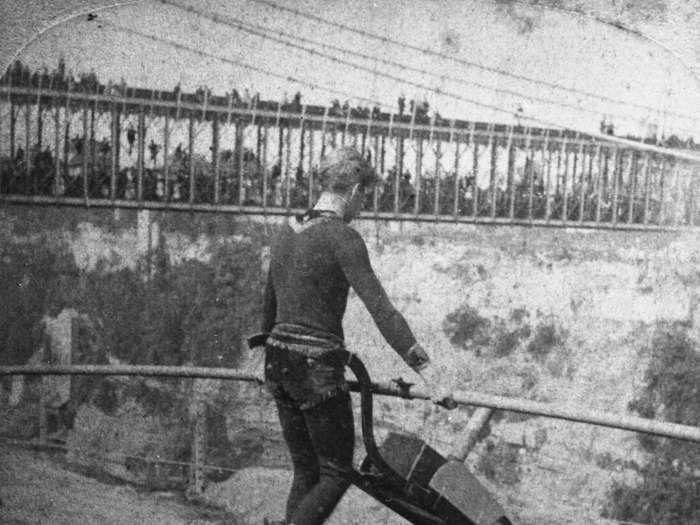
Sources: History.com, Smithsonian Magazine
In 1876, a 23-year-old Italian woman named Maria Spelterini crossed the gorge on a tightrope wearing baskets for shoes and a paper bag over her head. She is the only woman to have made the tightrope crossing.
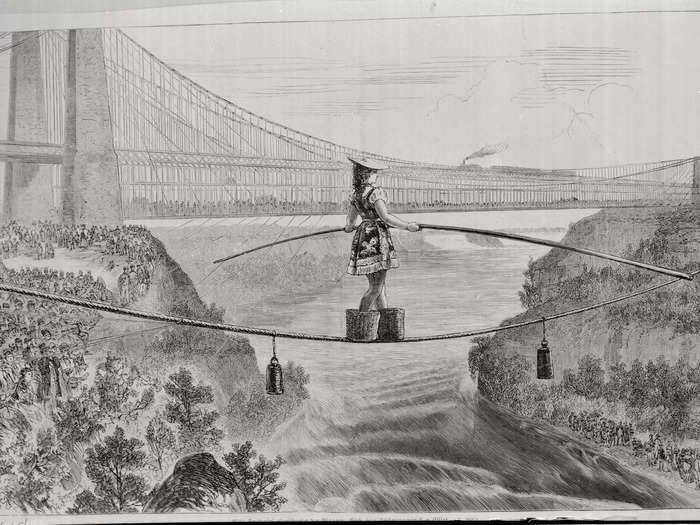
Source: History.com
From 1887 to 1896, four other men crossed the gorge on tightropes. Only the first, Ontarian local Stephen Peer, died in an attempt to make the crossing in 1887. He died during a nighttime crossing after he'd made several successful trips across.
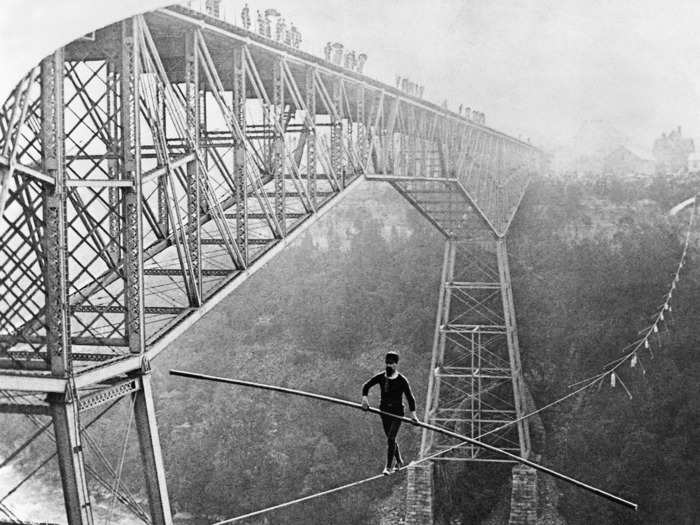
Samuel Dixon, Clifford Calvery, and James Hardy all successfully crossed the gorge. Calvery crossed it in record time, too — six minutes and 33.5 seconds.
After that, there were no more crossings for more than 115 years.
Source: History.com
As the excitement around tightropes winded, the next way people sought to harness the thrill of the falls was by riding it.
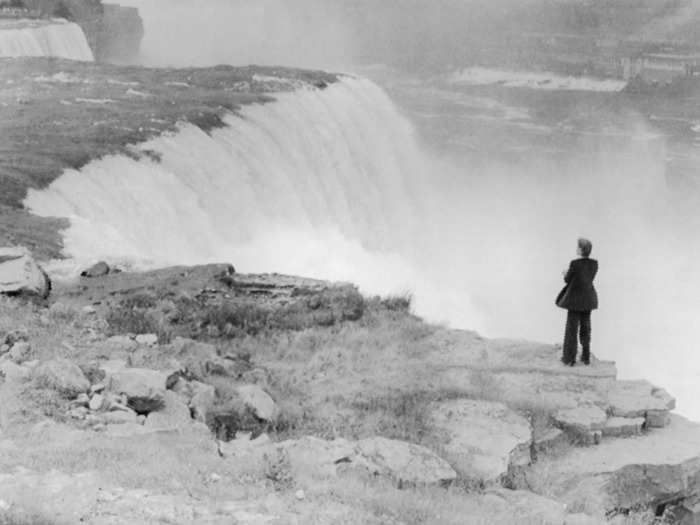
Sources: Stuff, New York Times, RNZ
In 1901, Annie Edson Taylor, a 63-year-old teacher from Bay City, Michigan, designed a barrel that included pillows and cushions and sent her cat in it over the falls first.
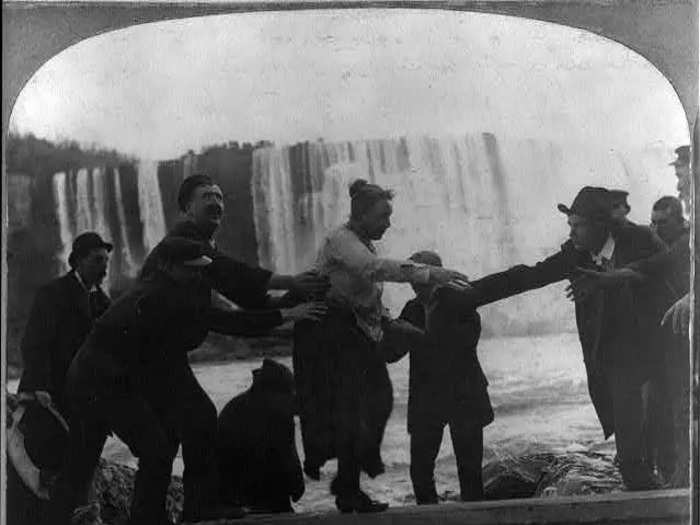
When the cat lived, Taylor rode the falls on her 63rd birthday.
As a team of boatmen pulled her out of the water, one rescuer shouted: "Good God! She's alive!"
Sources: Stuff, New York Times, RNZ
After the stunt, she told reporters she "would not do it again for a million dollars."
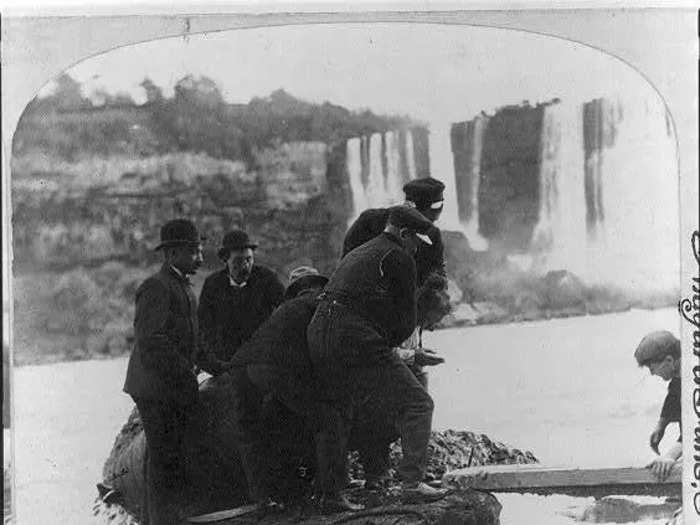
"I would sooner walk up to the mouth of a cannon knowing it was going to blow me to pieces than make another trip over the falls," Taylor said.
She had hoped the fame from surviving the fall would provide financial stability, but she died in poverty in 1921.
Sources: Stuff, Jacksonville.com, New York Times
In 1911, British stuntman Bobby Leach, who had previously leaped between rope ladders attached to moving planes and parachuted from hot air balloons, rode the falls in a steel barrel. He survived but broke his jaw and both kneecaps on impact.
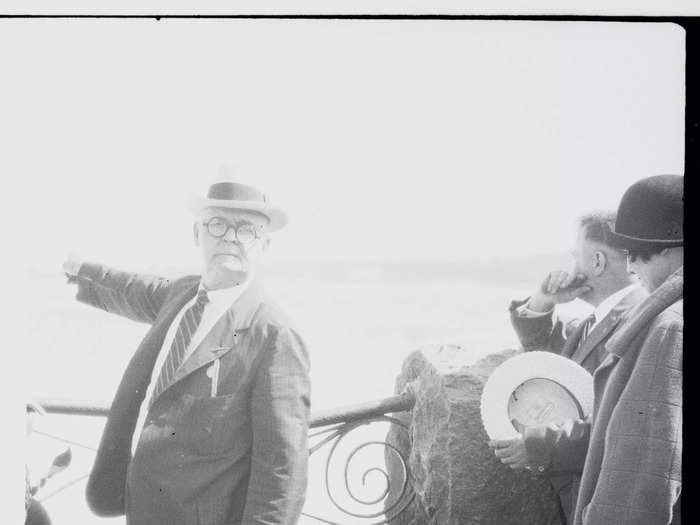
In 1920, a 58-year-old English barber named Charles Stephens went over the falls in a heavy barrel with a lead bottom. For extra weight, he tied his feet to a 100-pound anvil. He didn't survive the fall and was ripped apart from the impact.
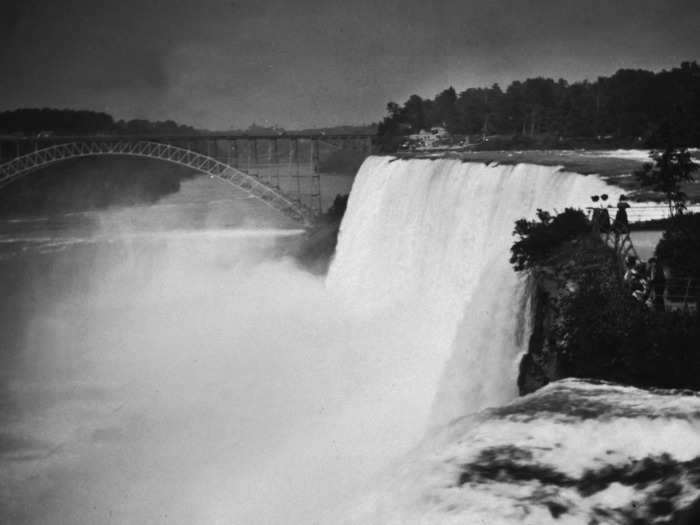
He was the first person to die attempting to ride the falls. The only part of him found was his right arm, which had the tattoo "Forget me not. Annie."
Bobby Leach had told him he needed to test the barrel out before he tried it himself, but Stephen thought Leach was jealous and ignored the advice.
"If I thought there was a chance I'd be killed, I wouldn't attempt to shoot Niagara Falls in a barrel," Stephens had said. "I don't expect to be as seasick as I was coming from England on the boat."
Stephens had been a showman for much of his life. In the 1900s, he shaved men while they were in a cage of lions and reportedly kissed one of the lions on the mouth.
Sources: Stuff, Bristol Post
In 1928, Jean Lussier, a 36-year-old man from Quebec, went over the falls in a rubber ball in front of a crowd of 150,000 people. He was the first person to ride the falls in something other than a wood or steel barrel.
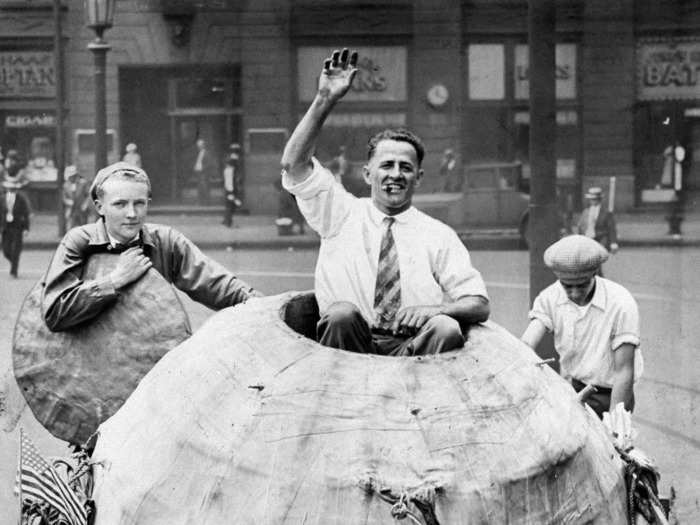
His large rubber ball weighed about 760 pounds. The ball's interior was lined with tubes that were filled with air for the ride.
He survived and sustained nothing more than a small cut on his forehead.
"I kept bracing for a sharp jar, but it never came," he told reporters. "It was like making a ski jump in slow motion."
Sources: History.com, St. Catherines Standard
In 1930, a New York chef named George Stathakis went down the falls in a barrel with three hours of worth of oxygen and his pet turtle named Sonny Boy. He wanted to write a book and thought the fame he'd get from riding the falls might pay for it.
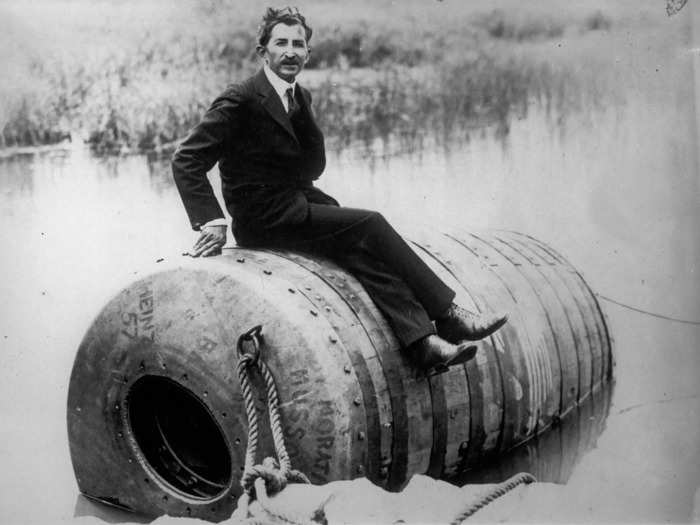
Source: Stuff
While Stathakis survived the drop down the falls, he was trapped at the bottom of the falls and suffocated before a rescue party could get to him.
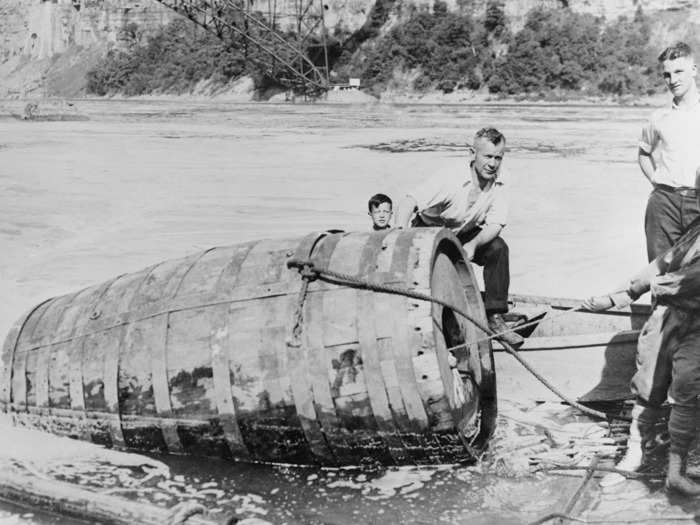
Source: Stuff
In 1930, William Red Hill Sr., a local hero who had saved 28 people from drowning around the falls, rode through the Niagara rapids in front of 25,000 spectators. He survived and made the journey twice more before he got trapped in some rough waters and was in need of rescue.
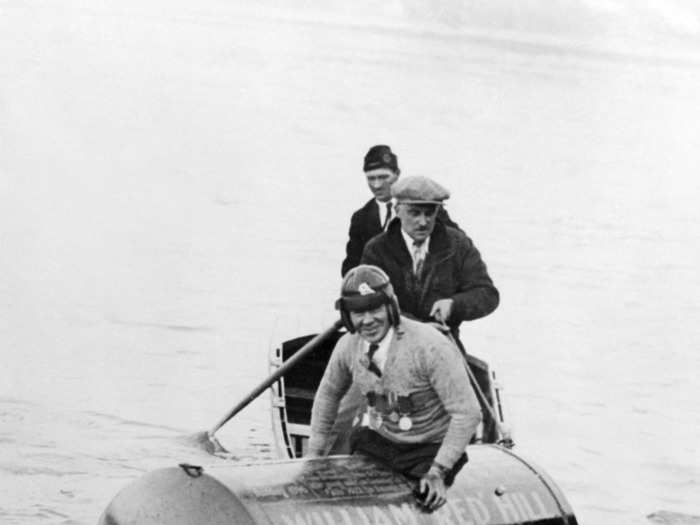
Hill Sr. never attempted going over the falls. He called it a "fool's game."
Sources: New York Times, WBUR
But that didn't stop his son William Red Hill Jr. from trying. In 1951, Hill Jr. died during an attempt to go over the falls. He had built himself a cheap contraption called "the Thing," made out of canvas, fish nets, and tubing.
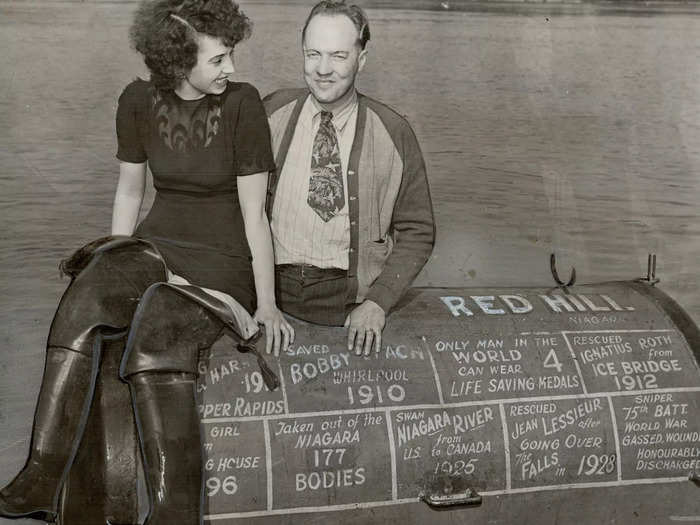
He went over the falls in front of an estimated crowd of up to 300,000 people, but the contraption crumbled when it hit the water and Hill Jr. died.
His death led to an official ban against riding the falls.
Sources: Stuff, New York Times, WBUR
In 1960, 7-year-old Roger Woodward unintentionally plunged over the falls in nothing but a life jacket when the boat he was on with his family capsized. His father died in the water and his sister was saved before she got to the falls, but Roger went over the falls and survived.
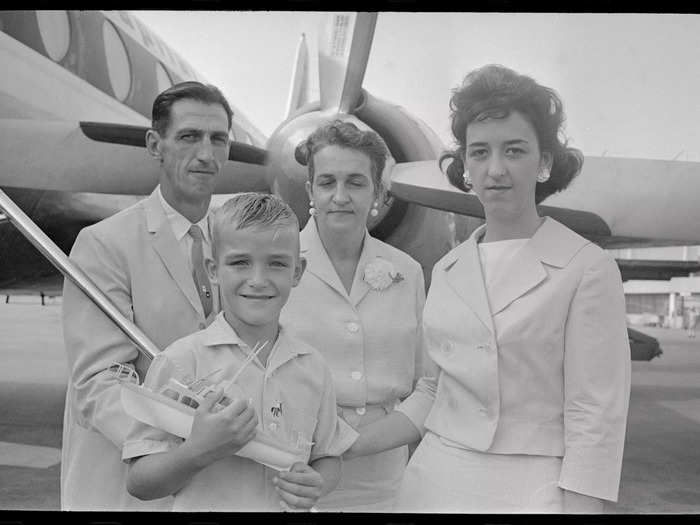
Roger was saved by a tourist cruise boat at the bottom of the falls.
"I was floating in a cloud. I had no sensation of up or down," he told the Associated Press in 2010. "I didn't have any sensation in my stomach like you might have on a roller coaster . . . that moment when your stomach is in your throat."
Sources: Stuff, Jacksonville.com
In 1985, 22-year-old stuntman Steven Trotter went over the falls in a barrel. He survived with nothing more than a scraped knee and was charged for breaking the law by the police. Here, he holds one of the oxygen tanks he took with him.
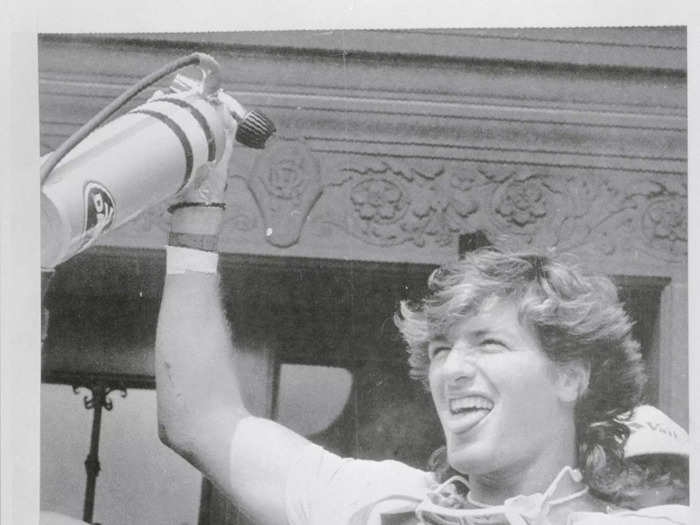
After the ride, he said "it was cool." He later described the fall as similar to "being in an elevator with no cable."
Source: New York Times
In 1989, Peter DeBernardi, 42, and Jeff Petkovich, 25, survived going over the falls in a foam-lined, 10-foot-long steel tank. They were the first two-person team to make it.

Their reason for doing it? Drugs.
They told the Deseret News they wanted to show kids "there's a lot better things for kids to do than be on the brink of dope."
Their only injuries were a few cuts and scrapes.
Sources: Independent, Deseret News
In 1995, Steven Trotter rode the falls again. This time, he went with a 29-year-old woman named Lori Martin in a barrel that was built out of water heaters lined with fiberglass. They were the first man-and-woman duo to make it down the falls.

They walked away from the stunt without injuries but needed to be rescued when their barrel got caught in rocks below the falls.
Sources: History.com, UPI
In 1990, 28-year-old Tennesse native Jessie Sharp tried to ride the falls in a canoe named "Rapidman." After going over the falls, he disappeared and his body was never recovered. His canoe was later found with a large dent in it.
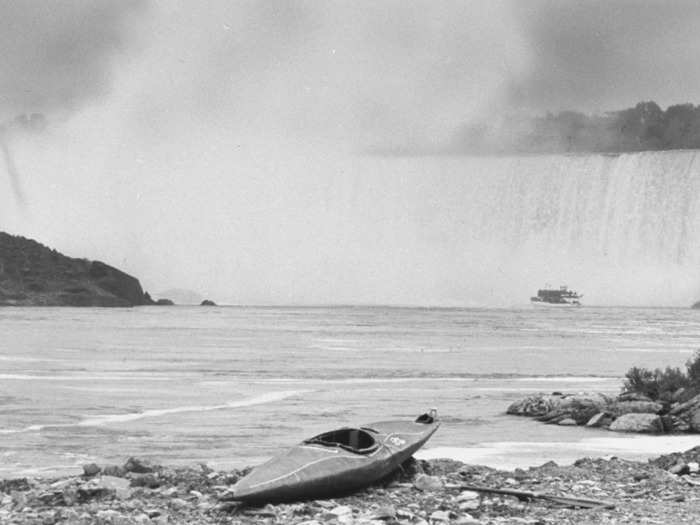
Before he went over the falls, police constable Jeff Latham said he saw Sharp twirl his paddle confidently.
Sharp had been so sure he would survive he had made a dinner reservation for that evening.
Source: Tampa Bay Times
In 1995, 39-year-old Californian Robert Overacker went over the falls on a jet ski. He had a rocket-propelled parachute strapped to his back, and the plan was to float down after flying off the falls.

But the parachute didn't work and he fell to his death.
The stunt had been planned for seven years and was done to publicize the issue of homelessness.
Sources: AP News, Los Angeles Times
In 2003, Kirk Jones from Canton, Michigan, jumped off the falls in attempted suicide, but he survived. He was the first person to purposefully jump off and survive without any protective gear.

He fractured two ribs in the fall.
"It felt like a team of people were beating me with baseball bats," he told the Detroit Free Press.
Jones died on his second attempt to go over the falls in 2017. He went over in an inflatable ball with his pet snake Misty.
Sources: Jacksonville.com, Independent
In 2012, 33-year-old stuntman Nik Wallenda, a member of the Flying Wallendas family, crossed the falls on a 2-inch tightrope. It was the first time it had been done in more than one hundred years and took him two years to convince authorities to let him do it.
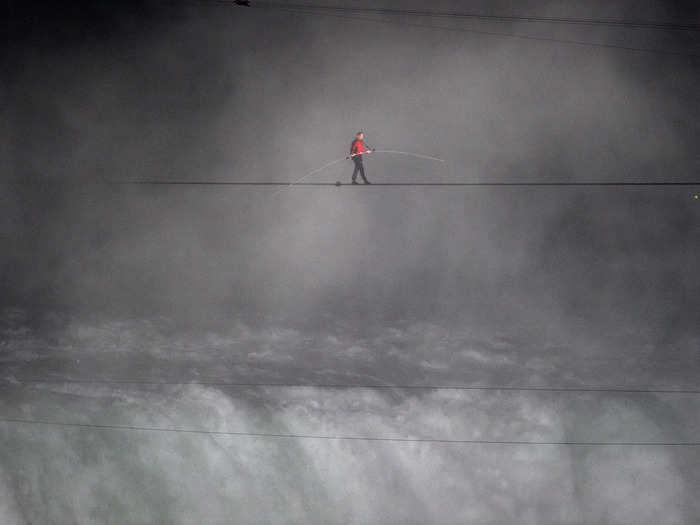
His route over the Niagara Falls was a new one, too. It was upstream from where previous tightrope walkers had gone and covered 1,800 feet compared to the route Blondin took at 1,300 feet.
A crowd of more than 100,000 people watched him live, as well as millions of people on television.
Before he began his walk, he said: "This is what dreams are made of, people."
Sources: Smithsonian Magazine, CBS News
Popular Right Now
Popular Keywords
Advertisement